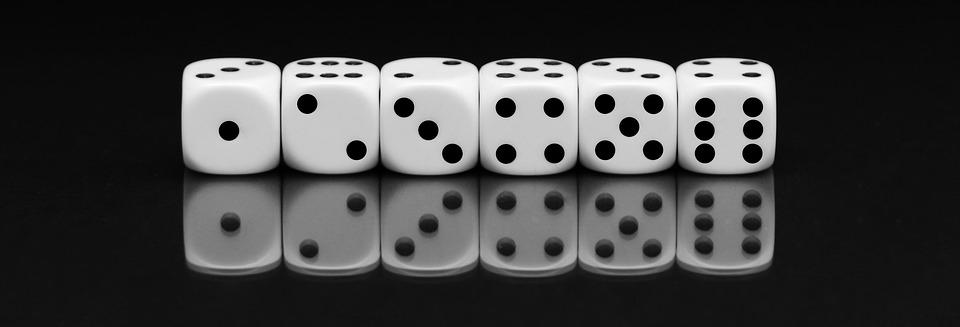- CTR is a metric that measures the proportion of users who clicked on a hyperlink to the total number of users who viewed the hyperlink.
- Organic CTR is important for websites as it shows how many leads come from search engine visibility.
- Click-through rate (CTR) does not directly impact SEO, but it is a valuable metric for understanding the performance and health of your website.
- The goal of SEO is to get more people to click on your page, CTR can indicate how well your website is doing in terms of SEO and user engagement.
- Optimize Title Tags, meta descriptions, and URLs that attract the attention of users and tempt them to click on your snippet in SERPs.
Ever wonder how your website’s click-through rate (CTR) affects how well it ranks in search engines? It’s a common question and topic of discussion in the SEO world.
CTR is a metric often used in marketing, from copywriting to user experience. It comes up a lot when talking about SEO. But does a high click-through rate from organic searches help SEO? Does it even matter? If so, how can we increase the number of organic clicks?
This article will give all of these answers and more in a casual, easy-to-understand way. So, whether you’re an SEO expert or just starting out, you’ll be able to understand and improve your website’s CTR and SEO rankings in no time.
What is click-through rate (CTR)?
CTR, or click-through rate, measures the proportion of users who clicked on a hyperlink to the total number of users who viewed the hyperlink. It’s a way of measuring how many people click on a specific link from all the people who see it. In other words, it tells you how often people choose to visit your website from the search results.
Organic CTR is when people click on a link from a Google search engine results page (SERP) instead of from a paid advertisement. To figure out organic CTR, you divide the number of clicks by impression count and multiply by 100 to get a CTR percentage.
Organic CTR is important for websites because it shows how many leads come from search engine visibility. If many people see the link, but no one clicks, that’s not a good thing. A similar idea is the conversion rate, which compares how many people visit a business to how many make a purchase.
NOTE: If your website is linked to Google Search Console, you can easily find your CTR by clicking on “Search Results”.
Does click-through rate (CTR) impact SEO?
This is where people need some clarification. The debate is whether CTR is a “direct ranking signal” or an “in-direct ranking signal.”
You’ll find multiple older studies and articles like the now infamous, Does Organic CTR Impact SEO Rankings? [New Data], which attempts to state that CTR leads to a higher ranking. Still, Google engineers themselves have since come out and dispelled the idea. They noted that click numbers are far too easy to manipulate to be considered a direct ranking fact. How easy would it be to buy clicks to your pages to help drive them up the rankings?
While Google doesn’t use CTR as a direct search ranking signal, it’s still a good idea to optimize your pages with CTR in mind. CTR is a valuable metric for understanding the performance and health of your page, regardless of whether it’s a ranking factor or not. The goal is to get more people to click on your page. So, even though it’s not a direct ranking factor, it can indicate how well your website is doing in terms of SEO and user engagement.
CTR and its role in SEO?
Any SEO campaign’s primary goal is to rank better for valuable keywords. Being on the first page for a given term is terrific, but what occurs after users see your snippet is even more crucial. Impressions are nice, but it’s all about attracting people to visit your website. The more web traffic your site receives, the more opportunity you have to gain new readers and conversions or hit other important KPIs. This is why getting more visitors to click on your page when it appears on a SERP is where your SEO efforts will pay off.
It’s worth noting that there’s a link between how high your page ranks and how many people click on it. While the dispute over CTR as a ranking element might be perplexing, it is evident that a page that comes first on a SERP will receive the most clicks, a page that appears second will receive fewer clicks, and so on. Branded and long-tail keywords are more likely to be clicked, while the average CTR varies based on the industry and search intent. However, if your website ranks in the top three results on a SERP, you have a significantly better chance of earning a click than if your page ranks further down.
CTR is vital for SEO since it measures the relevancy and quality of your content. When your website receives a high CTR for a specific keyword or phrase consistently, it signals to search engines that your content is relevant and valuable for those search terms, increasing the likelihood of your website ranking higher in search results, resulting in more organic traffic and potential customers. A low CTR, on the other hand, can affect your SEO because it may imply that your material could be more relevant and valuable than other results, resulting in a lower ranking for your website and fewer organic visits and potential customers.
Ways to improve CTR
So, how can you improve your CTR and boost your SEO? Here are a few tips:
Meta tags
It would be best if you prioritized getting your page to the top of the SERPs. Metadata optimization is the key to success in this regard. It’s common knowledge that Google uses metadata to classify pages, but you should also consider how to write it so that it draws in readers.
Page titles
Page Titles are the place to begin. Having these fully optimized for click-through rate (CTR) is crucial since it plays a significant role in Google’s ranking algorithm. Finding and using the proper keywords and arranging them in an appealing way will help you achieve this. Keep in mind that one-word broad terms can be difficult to rank for, but longer-tail keywords can be much more straightforward to include.
Meta description
Moving on to meta descriptions. They can boost click-through rates even if they don’t affect rankings directly. Tweets are like a small sales presentation, only 160 characters long. Use some of the exact keywords you used in the title tag, as they will be bolded in the meta description if they match the user’s query.
URL optimization
Remember to optimize URLs. Even if it doesn’t seem like much, remember that it all adds to the big picture. You want to use real words in your URL and keep it brief. You should use some of your Title Tag keywords but avoid keyword stuffing. A well-constructed URL should be simple to read and comprehend.
When optimizing URLs, stick to best practices:
- Make URLs readable by humans
- Use keywords when appropriate
- Keep URLs short
- Match URLs to titles
- Use fewer folders
Final thoughts about SEO and CTR
The bottom line is that whether or not click-through rate (CTR) is a direct ranking component, it is still crucial to optimize for it. It’s all about making your page more appealing to users and boosting the possibility of clicks. And, let’s face it, a high CTR indicates a well-executed optimization campaign. So, consider what users desire instead of focusing solely on what Google wants. Any SEO effort should create Title Tags, meta descriptions, and URLs that tempt users to click on your page. And if you need assistance, Redefine’s SEO experts are ready to help. Contact us today to discuss increasing your click-through rate and bringing your website to the next level.




